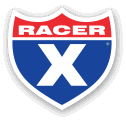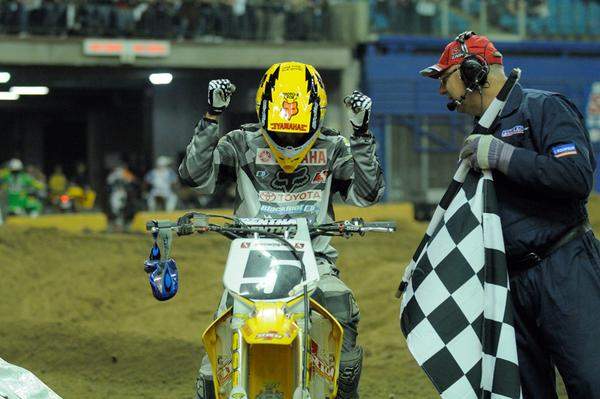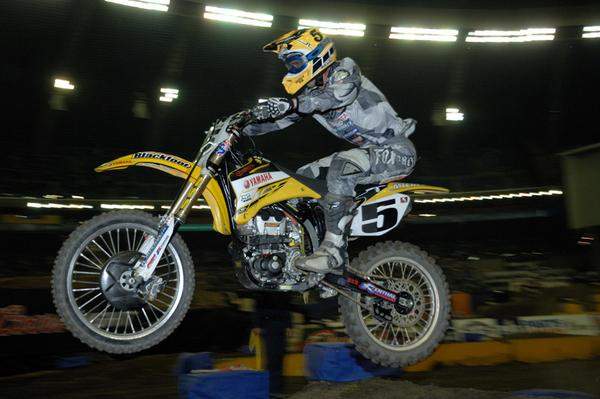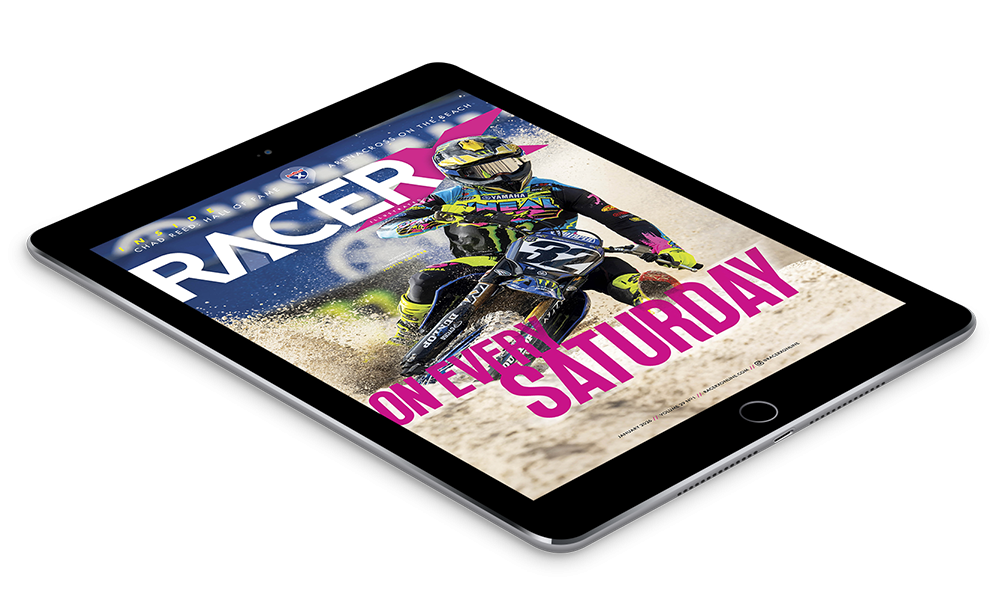There certainly isn’t much in motocross that Jean-Sebastian Roy hasn’t done. Win multiple Canadian championships? Check. Race all over the world? Check. Win the Montreal Supercross? Check. In fact, about the only thing the recently retired father of two hasn’t done is work on the official side of racing. Well, you can check that off too, as JSR has been named the technical director of this year’s Montreal Supercross.
His job will be to make sure the track is safe, fun, and challenging, all at the same time. And in case any of the riders complain, he’ll be pounding laps on his track himself to make sure it’s right. This year’s edition of the Montreal Supercross is the thirtieth one and promises to be one of the best ever. It’s got supercross, endurocross, freestyle and is jam packed with action. Directmotocross.com will be hosting a webcast on October 3rd of the event. Stay tuned for more details.
Jean-Sebastian Roy: Yeah, it’s pretty serious huh? It’s the same group of people that have put this race on for the last twenty years. I’ve known these guys for a long time and tried to help them out whenever I could. Obviously I couldn’t help them out too much when I was racing the event, otherwise when you win, people get mad. So I didn’t get involved much. When I decided to retire last year at Montreal, we spoke about this year and worked out the details.
It wasn’t surprising for me that they approached me about it; I kind of knew about it last year. It’s kind of cool because there is some pressure in this. We have only three days to build the track and no one is doing it full-time; we’re not like the Dirt Wurx guys. It’s a good crew; they build provincial tracks and know how to work on the equipment. It’s going to be interesting. The big change this year is the Endurocross track, it’s going to be fun to build. There’s another group of guys that are going to make sure that is up to snuff. They’ve been to some down south, so they know what’s going on.
It’s the same group of people bringing the dirt in and out, everything is the same except that I’m going to make the decisions on the triples, the lengths and take-offs-things like that. I will also be trying them out as well. We hope to make it as good as in years past when we had Dirt Wurx. Those guys build the best tracks on the planet – they know what they’re doing.
The promoter is trying to cut expenses a bit as they didn’t get the funding they had in the past, so we’re doing the track. There are no dune buggies this year as that was a whole bunch of extra dirt. Like everywhere, we’re trying to tighten our belts and save some money. Just like the race teams. Plus I wanted some more responsibility now that I’m retired and this gives me a chance to stay involved with this event. I’m going to help out promoting of the event also. I’m doing some press conferences, dealer shows and I’m a spokesman for the race.
What’s a good track to you?
Usually in the U.S. supercrosses that I’ve done in the past, I like it a little more technical. I like there to be jumps everywhere and make it interesting for the riders and the fans. There are a few different things in Quebec though that we have to deal with. There is only one supercross for the Canadian riders and they don’t have as much experience on a supercross track as me or Darcy Lange. The U.S. guys that come to Montreal have lots of experience as well. We have to make it a bit easier than a U.S. race because at the end of the day, it’s a show. It’s there for the fans, they want to see a good race and we want them to come back next year. If we build a full-on U.S.A. supercross track then we would see some not good racing by the guys that don’t ride supercross that much.
The other thing is that Olympic Stadium is huge. It’s a massive place and you have to be aware that the fans that are up in the top can’t make things out. A fifty foot double out of a corner that is pretty hard for us riders to do and is bad-ass when you’re sitting there is just a little jump for the fans up there. We’re going to bring back those semi trailer jumps. They have to be big for the fans and also safe at the same time. The track’s going to be faster than an American supercross but big so that the fans can be impressed. We probably won’t build too many whoops, and they will be wider and smaller than what the USA guys are used to. That’s what people want to see, big air. We also have the freestyle landing ramps that we have to account for.
Since it’s not a series, we can do what we want. It’s one night and has to be a good show. You can’t build a track and make everyone happy.
So since you’re going to be trying it out, I take it you’ve been doing some riding?
Yeah, I’m finishing my track tomorrow. I’ve been doing some riding schools and tore down some of my supercross track for those guys. I’ve got an outdoor track that weaves in and out of my supercross track now. I have about fifteen French kids that are racing Montreal and want to have some experience on a supercross track, so I’m rebuilding it and freshening up the lips to make it a little more technical. I’m riding myself once in a while too, I have a 250F.
Why a 250F?
Because most of these kids that I teach are on 250s and I want them to see me do something on the same size of bike. I want them to know that whatever they are riding is capable of doing anything. For riding together it helps a lot. When I build jumps, I like to try it and make sure everything is good and since I’m not racing I can put as many laps on the track as I want to and nobody can bitch!
What has been your favorite Montreal track over the years?
There were so many, but I think it was the year that Nick Wey came up and won. That was the first year that Dirt Wurx was there and it was like a U.S. supercross track. It was good, and was really similar to a U.S.A. track. It was really fun. I don’t remember too much about all of them.
What has been your most memorable Montreal race?
Of course last year because I knew it was my last one. It was a special weekend for me and was made even better by me winning it. 1996 was also great for me as there were a lot of American riders there and I won. That was cool to me. Also, 1998 me and [Marco] Dube got out front of the start and we both crashed. I remember the roof was leaking a little bit and then I had to come from the back. Tim Ferry and I battled for a bit but I was so tired, I think Sellards passed me with two corners to go. That was exciting, even though I didn’t win.
What about Rollerball? Any races at Montreal with him?
I don’t think so. I must have raced him in the early nineties. My first five years, I was off the track, on the concrete and really struggling with racing supercross and the pressure. The one year [’92] they didn’t even hold the race because a chunk of concrete landed on the floor. So, I’m not sure if I did or not, but I would’ve beat him anyway (laughs).
No, I don’t think you would have. You’re the second best Canadian rider ever, JSR.
(Laughs) I know how you feel, I know he raced a bunch when it was two nights and I would’ve loved to race when it was back to back.
Just for the record, JSR and Rollerball battled twice at the Big O in Montreal. In 1990, The Ross beat the young JSR but in ’93 JSR finished 14th and Ross 16th. Their record is forever tied 1-1.




